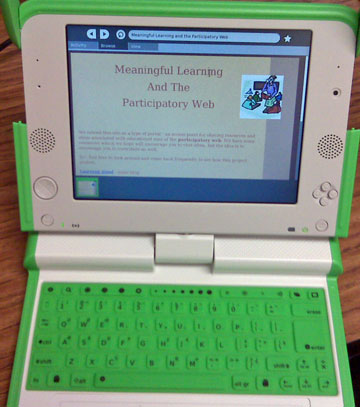The relatively recent focus on “cloud computing” has a vaguely familiar feel to those of us who have been involved with technology for a while. Some of my early ed tech research was conducted with a PDP 11/34 mini computer “serving” a dozen “dumb terminals”. The terminals were basically a keyboard and monitor and everyone connected to the same “remote” computer. Remote in this case meant “in another room”.
A recent NY Times article indicates that “thin client” computing may be on the rebound. The “hook” is often financial assuming that many users can share programs (software) and hardware (server) with the result that the work stations can be less powerful and thus less expensive.
Cloud computing is very similar. For example, many users with low end hardware can connect via the Internet and use Google docs rather than invest in many copies of Microsoft Word.
What is the difference? One difference might be the openness/extensiveness of the network. A thin client architecture serving a company is different than an Internet-based service available to everyone. Perhaps a second difference is how completely “clients” must subject themselves to “the system”. One model of the thin client approach assumes users are connecting with the bare minimum of hardware and software and cannot perform actions that allow independence – e.g., storing local copies of work completed. In contrast, Google Apps allows local storage of resources and through the use of Google Gears independence from the Internet.
While some are concerned that cloud computing is a trap, I am concerned only to the extent the options are few and inexpensive opportunities come at the expense of becoming dependent on one or two providers.
Tags: cloud
153 total views






You must be logged in to post a comment.